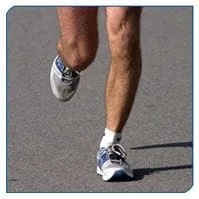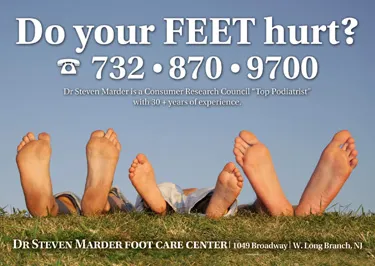Heel Pain Fact Sheet
- posted: Apr. 19, 2010
WHY SUFFER? You may know how it feels. A knife-like pain in your heel when you get out of bed in the morning. Usually it disappears in a few minutes, only to return in the afternoon and after periods of inactivity.
Pain is NOT natural. - It's a warning. Heel pain, tackled soon after it appears, is easy to treat in perhaps 90% of the cases. The patient usually has a choice of conservative, non-invasive, straightforward, effective options.
UNTREATED HEEL PAIN CAN WORSEN -
Heel pain that lasts for months is considered chronic and tends to be far harder to resolve. If the initial treatments aren't effective, then ESWT (Extracorporeal Shockwave Therapy) may be appropriate to resolve the pain. ESWT is a non-surgical, non-invasive, FDA approved treatment.
One of the complications of heel pain is heel spur - growth of bone on the underside of the heel bone. Inflammation can develop at the point where the spur forms. Then surgical removal of the spur may be required to relieve the pain.
WHAT CAUSES HEEL PAIN?
Common causes of heel pain -
- Faulty biomechanics, which place excessive stress on the heel bone, ligaments, and/or nerves, when walking, running, jumping, etc.
- The wrong footwear for the activity or for the foot type. Footwear that's fine for office work is not cushioned enough for long hours standing on hard floors. If you have heel pain, the heel height and shoe last are critical for comfort.
- Your weight - the more you weigh - even if you're tall and lean - the more stress for your feet.
- General health conditions, ie arthritis, diabetes, gout, circulatory problems, etc.
HEEL PAIN IS A COMMON FOOT COMPLAINT - Over 2.5 million people suffer from heel pain in the United States. Heel pain is usually plantar fasciitis, an inflamed plantar ligament, the fibrous tissue connecting the heel bone to the base of the toes.
Dr Marder - "Anyone can develop plantar fasciitis, but it's more common among the over 40's. As we age, the plantar foot ligaments become less elastic and less able to absorb shocks caused by movement.
As we walk upright, we exert 7 times our body weight on our relatively small feet.''
DIAGNOSIS - Because every foot is different, Dr Marder has state-of-the-art, innovative, diagnostic equipment at the foot care center. Both x-ray and ultrasound are used to see the inside of the foot, in order to evaluate the heel pain, to locate bone spurs, and confirm the doctor's clinical diagnoses. The doctor then discusses with each patient his or her treatment options.
TREATMENT OPTIONS - Applying the gold standard treatment protocol for heel pain, we have a proven record for resolving heel pain in most cases. We have the experience to match the protocol to the individual patient, and to give that patient appropriate choices.
The range of heel pain treatments include, but is not limited to -
- Changes to footwear, including custom orthotics.
- Changes in activity, including exercise programs.
- Foot strapping, air heel therapy and night splinting.
- Anti inflammatory medication.
Ultrasound is used to precisely and quickly target injections, so that the medication hits the source of the pain. Ultrasound guided injections often relieve pain even when unguided injections are unsuccessful.
ESWT THERAPY - If the initial treatments don't work, or the heel pain has become chronic, ESWT may be appropriate to resolve the pain.
ESWT is performed in our office under local anesthesia, takes less than 30 minutes and is covered by most insurance carriers. The recovery period is short. Most patients feel better immediately after ESWT and are able to resume most of their activities. Marder Foot Care Center is designated a Center of Excellence for ESWT therapy.
ABOUT MARDER FOOT CARE -
Dr Steven J Marder has practiced for more than 25 years. He graduated from the Pennsylvania College of Podiatric Medicine, now part of Temple University, a leading center for education and research. He is a Diplomate of the American Board of Podiatric Surgery and Fellow of the American College of Foot and Ankle Surgeons and ESWT certified.
Dr Marder has been selected by the Consumer
Research Council of America as a
" Top Podiatrist"



Heel Pain Is A Common Foot Complaint.
Over 2.5 million people suffer from heel pain in the United States.
One of the complications of heel pain is the growth of bone on the underside of the heel bone known as a heel spur.
- (ESWT) Shock Wave Therapy may be appropriate to resolve the pain.
- ESWT is a non-surgical, non-invasive, FDA approved treatment.
